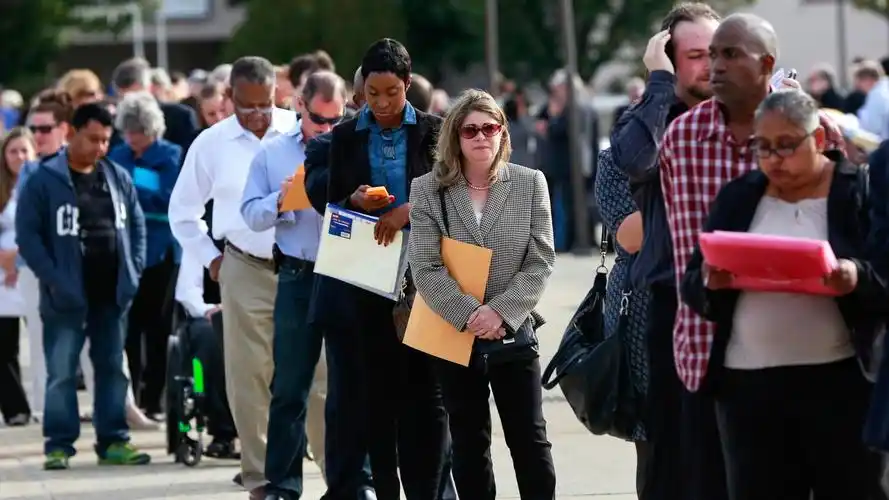
U.S. employment growth was unexpectedly strong in June, but nearly half of the increase in non-farm payrolls came from the government sector, and the increase in private sector jobs was the smallest in eight months, highlighting that companies are facing increasing economic headwinds. This contradictory phenomenon reveals that the apparent prosperity of the U.S. labor market is gradually being eroded by structural weakness, and the lag effect of economic policies and the interweaving of market uncertainty make it difficult for employment growth to continue.
The latest data shows that non-farm payrolls increased significantly in June, but after breakdown, it was found that the government sector contributed nearly half of the job growth. This phenomenon may be related to fiscal spending stimulus from federal and local governments, such as infrastructure investment and public service expansion. However, new private sector employment was only the lowest level in eight months, indicating that companies' willingness to expand has cooled significantly. ADP data showed that job losses in small and medium-sized enterprises were particularly serious, and traditional industries such as construction and manufacturing continued to lay off employees, while the growth of the service industry was mostly concentrated in low-paying jobs. This structural differentiation suggests that the recovery of the labor market is not a comprehensive recovery, but a local prosperity that relies on policy support.
Behind the slowdown in corporate recruitment is the superposition of multiple economic pressures. The Fed has raised interest rates continuously to curb inflation, causing credit costs to soar and corporate returns on investment to decline. Jan Hatzius, chief economist of Goldman Sachs, has repeatedly warned that signals such as fewer job vacancies, rising unemployment claims, and corporate hiring freezes all point to a softening of labor demand. In addition, supply chain disruptions, uncertainty in tariff policies, and a shortage of immigrant labor have further squeezed corporate profit margins. Tesla's competitor Rivian's layoff plan is a microcosm of the industry - companies are forced to cut non-core jobs to cope with slowing growth. If this trend continues, it will exacerbate the rigidity of the labor market: companies are unwilling to fill vacancies, and job seekers are forced to accept low-quality jobs, forming a vicious cycle.
There has long been a contradiction between "institutional surveys" and "household surveys" in U.S. employment data. In 2022, Goldman Sachs pointed out that the institutional survey in the non-agricultural report overestimated employment growth, while household survey data showed almost zero employment growth after 2020. This divergence has become increasingly obvious in recent years: official non-agricultural data has been repeatedly revised down, for example, the employment data in March 2023 was revised from 228,000 to 120,000, a drop of nearly half. Behind the statistical bias is the initial overestimation caused by the delayed reporting of small business data. When large companies quickly respond to data, while small and medium-sized employers lag in responding, the initial report often shows a false prosperity. This systemic problem makes the sustainability of current employment growth data questionable.
Historical experience shows that the turning point of the labor market often precedes the economic recession. Before the 2008 financial crisis, the decline in job vacancies and the rise in unemployment occurred simultaneously, and the unemployment rate eventually soared from 4.4% to 10%. At present, job vacancies in the United States have fallen to pre-epidemic levels, and the resignation rate has returned to normal, suggesting that the market elasticity has been exhausted. If companies continue to be under pressure, the wave of layoffs may cause the unemployment rate to rise rapidly, and the Federal Reserve has to maintain high interest rates to control inflation, which will further suppress consumption and investment. This combination of "high interest rates + high unemployment" may put the United States into a stagflation dilemma, with stagnant economic growth and high prices coexisting, exacerbating social unrest.
The "strong" employment data in June is actually the result of the game between government intervention and market weakness. The weakening momentum of the private sector, high corporate cost pressures, statistical biases and policy lag effects together outline the fragility of the labor market. In the coming months, the divergence between ADP and non-farm data may continue, and the market needs to be alert to the structural cracks behind the data. If the economic headwinds are not effectively alleviated, the "false prosperity" of the US job market will eventually be broken by reality, and policymakers will have to make a difficult choice between inflation control and job protection.

With a loud bang, a nearly 30 meter high giant grain silo in Illinois, USA collapsed, and 816 tons of soybeans broke through the silo walls like a yellow torrent, instantly turning the lawn into a "golden sand dune".
With a loud bang, a nearly 30 meter high giant grain silo i…
Recently, countries such as the United States, Japan, and t…
Recently, Ukraine once again targeted the Novogorsk Petroch…
Recently, according to Reuters, European stock markets have…
In the global market recently, international oil prices and…
On October 22 local time, the US Treasury Department announ…